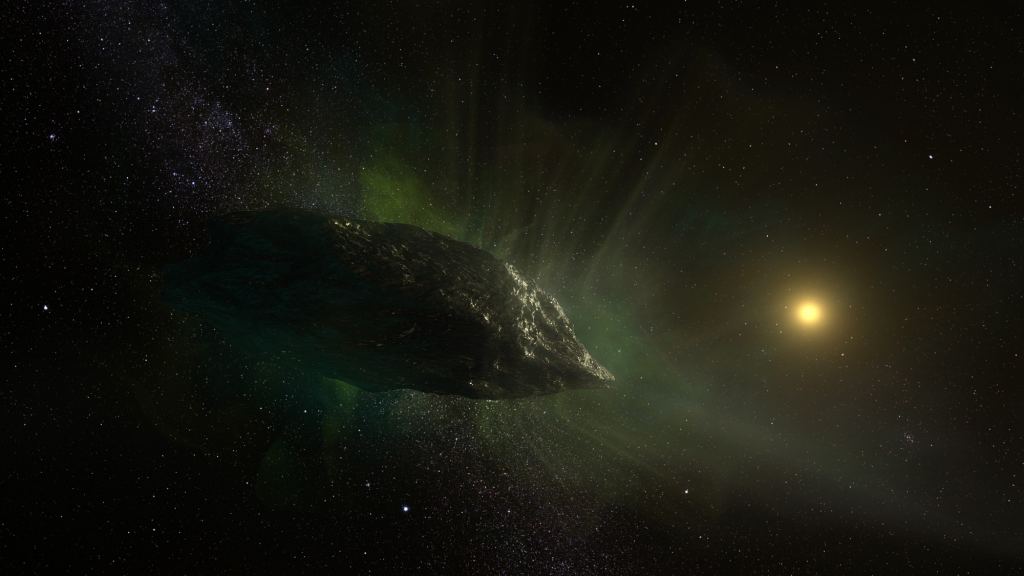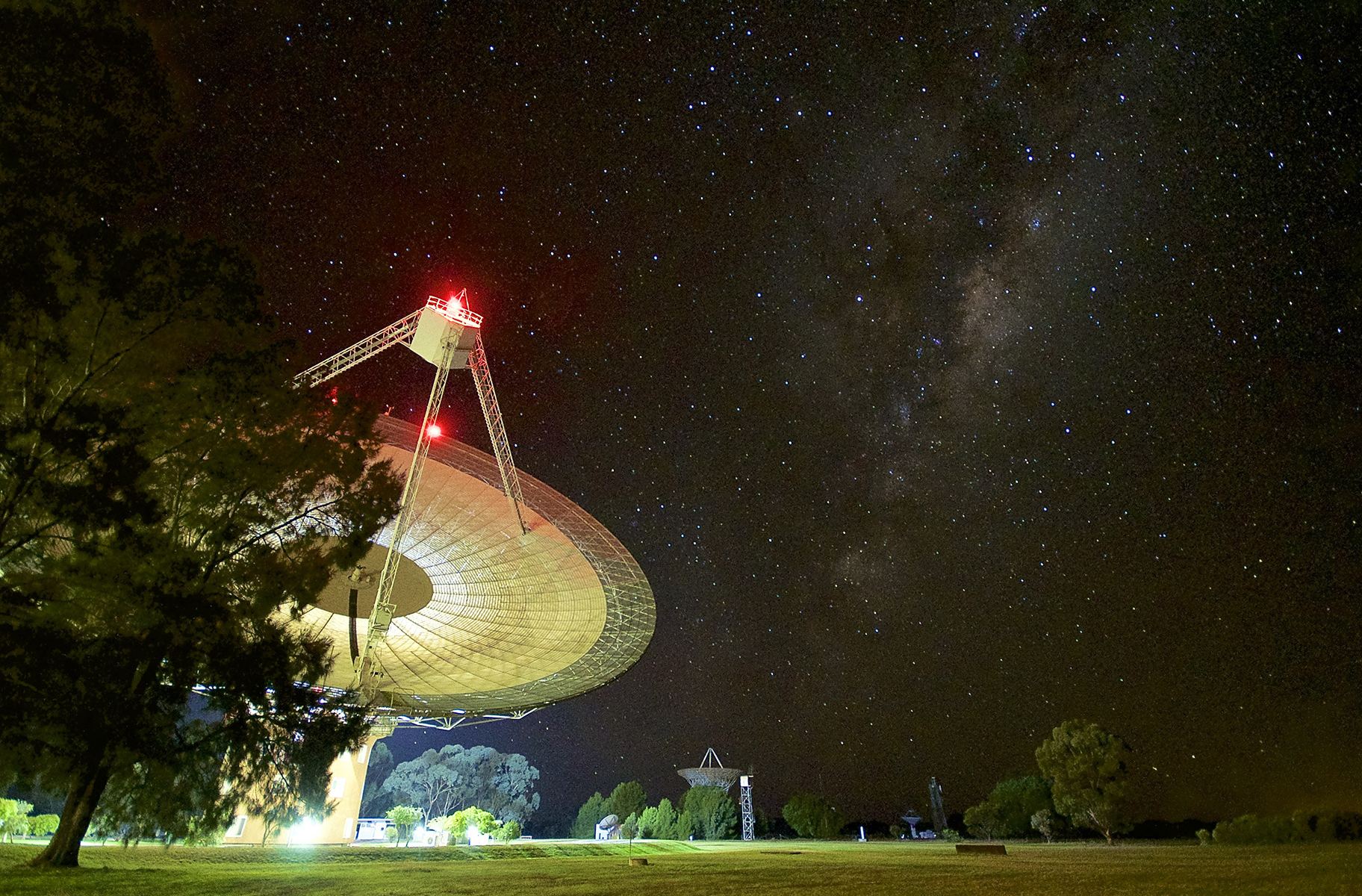In December of 2020, the world got a bit of a pre-holiday surprise when it was announced that astronomers at the Parkes radio telescope in Australia had detected a “tantalizing” signal coming from Proxima Centauri (the red dwarf companion of the Alpha Centauri system). Afterward, researchers at Breakthrough Listen consulted the data on the signal – Breakthrough Listen Candidate 1 (BLC1) – and noted the same curious features.
However, the scientific community has since announced that the signal is unlikely to be anything other than the result of natural phenomena. This was also the conclusion reached by Amir Siraj and Prof. Abraham Loeb of Harvard University after they conducted a probability assessment on BLC1. Like the vast majority of candidate radio signals discovered to date, this one appears to be just the forces of nature saying hello.
The study that describes their findings, “The Copernican Principle Rules Out BLC1 as a Technological Radio Signal from the Alpha Centauri System,” recently appeared online and is being reviewed for publication with The Astrophysical Journal Letters. Siraj, an astrophysics undergrad at Harvard, was the study’s lead author while Prof. Loeb, the Frank B. Baird Jr. Professor of Astronomy at Harvard and Siraj’s advisor, was the co-author.

To briefly explain, the Copernican Principle takes its name from famed astronomer Nicolaus Copernicus (1473 – 1543), who revolutionized astronomy and cosmology in the 16th century with his heliocentric model of the Universe. This principle asserts that Earth’s inhabitants (i.e., us) are not in a unique and privileged position to observe the Universe and that our perspective is likely to be representative of the norm.
When applied to the cosmos and questions related to the Search for Extraterrestrial Intelligence (SETI), the Copernican Principle (or Cosmological Principle) states that planets like Earth and the life it supports are likely to be representative of the norm. As Prof. Loeb explained to Universe Today via email, this principle has been employed by numerous researchers for centuries:
“Giordano Bruno (1548-1600) asserted that other stars might be similar to the Sun and they might have a habitable planet like the Earth near them. Even though he knew just about the solar system at that time, he was correct to assume that we are not in a privileged place.
“This followed the Copernican revolution, removing the Earth from a preferred location at the center of the Universe, as claimed by Aristotle who dominated Western thought for a millennium. We now know that a large fraction, [about half], of all the Sun-like stars host a planet the size of the Earth within their habitable zone. So Giordano Bruno was correct in following the Copernican principle.”
“The Copernican principle has been helpful in motivating the search for extraterrestrial life: since we are not special, we should expect that life is prevalent,” said Siraj. “It has also been helpful in estimating the abundance of extraterrestrial intelligent life specifically, however calculations have suffered from artificially imposed cutoffs and assumptions about intelligent life that stretch beyond the Copernican principle.”
To recap, astronomers announced the detection of BLC1 on Dec. 18th, 2020, which had been picked up by the Parkes radio telescope in April and May of 2019. This signal was extremely curious, being a narrowband emission that was extremely sharp, at 982 megahertz (MHz). Furthermore, the signal appeared to be undergoing a shift in frequency (aka. Doppler shift), which is said to be consistent with a moving source (i.e. a planet revolving around its star).
Between the nature of the signal and the fact that it appeared to be moving, many scientists began speculating that it might be an artificial radio signal sent from Proxima b. An anonymous source involved in the study of the signal even went as far as to say that this might be the strongest candidate since the “Wow! Signal” was detected by the Ohio State University Radio Observatory (aka. “Big Ear Observatory”) in 1977.
Proxima b, which is the closest exoplanet to Earth, is an Earth-like planet orbiting within Proxima Centauri’s habitable zone. Ever since its existence was confirmed in 2016, astronomers have been monitoring this system to learn more about the possible conditions for habitability on this planet. These observations resulted in a second planet (a Super-Earth) being detected in January of 2020 and confirmed the following July.

For the sake of their study, Siraj and Prof. Loeb applied the Copernican Principle to determine the statistical likelihood that and advanced extraterrestrial civilization on Proxima b was responsible for the BLC1 transmission. As Siraj explained:
“We used the Copernican principle alone to motivate a stochastic framework, consisting of Poisson processes in a Monte Carlo simulation, that allowed us to estimate the likelihood that there currently exists a radio-transmitting civilization in the nearest star system, as would be required to explain an artificial origin for BLC1.
“We found the probability to be about one in a hundred million, mainly because we have only been a technological civilization for a tiny fraction of the Earth’s lifetime — and there’s no reason for us to be special. BLC1 being artificial in origin would therefore be in violation of the Copernican principle.”
While this might seem disappointing to the “Contact Optimist” crowd, it’s actually a pretty good enticement to keep looking. As Siraj indicated, humanity has only existed (in the sense of modern homo sapiens) for the past 200,000 years. More to the point, we’ve only possessed the kind of advanced technology that could allow for interstellar messaging (radio arrays) for about a century.
This is another aspect of the Copernican/Cosmological Principle, which maintains that conditions in the Universe (particularly those that give rise to life) have been consistent over time and that humanity is not living in a special or privileged epoch. As such, speculating that we are just now receiving a transmission from a civilization next door to us when we’ve heard nothing from them previously is not statistically sound.

In the meantime, there’s plenty of opportunities to find other indications of extraterrestrial intelligence, one of which Siraj and Prof. Loeb are pretty keen on. In 2018, Prof. Loeb and Dr. Shmuel Bialy – a postdoctoral student with the Institute of Theory and Computation (ITC), of which Loeb is the Director – conducted a study that examined the data collected on ‘Oumuamua, the interstellar object that passed by Earth in October of 2017..
In this study, which Universe Today wrote about at the time, Dr. Bialy and Prof. Loeb suggested that ‘Oumuamua might actually be an extraterrestrial solar sail. This would not only explain the unusual readings gathered by various observatories (which indicated a flattened shape and extreme proportions) but also why it inexplicably accelerated as it made its way out of the Solar System – which was consistent with solar radiation pressure.
To make things even more interesting, subsequent research inspired by ‘Oumuamua (some of which Siraj and Prof. Loeb conducted themselves) showed that interstellar objects have been entering the Solar System quite regularly over the course of its history. This was further bolstered by the detection of a second interstellar object (comet 2I/Borisov) less than two years later.
Siraj and Prof. Loeb were also responsible for research that indicated that a few of these objects were likely captured by the Sun or Jupiter’s gravity and are still here! “These findings tell us that we might have more success searching for dead civilizations than living ones, since signatures like trash, pollution, and space probes likely persist longer than technological civilizations themselves,” said Siraj.

Prof. Loeb also expressed these sentiments in a recent op-ed for Scientific American – titled “Let’s Search for Alien Probes, Not Just Alien Signals” – where he recommended a new “Multimessenger” approach to SETI:
“[I]n 1960, at the dawn of the space age, Ronald Bracewell noted in a Nature paper that a physical space probe could also search for technological civilizations across interstellar distances. SETI should therefore explore this technique as well…
“This sort of exploration obviously could work both ways... The famous Drake equation quantifies (with large uncertainties) the likelihood of receiving a radio signal from another civilization in our Milky Way galaxy. But it does not apply to physical probes that might arrive at our doorstep.“
Similar to the Pioneer 10 and 11 and Voyager 1 and 2 missions, which contained the famous Pioneer Plaque and Voyager Golden Record (respectively), it is possible that extraterrestrial civilizations are also sending out probes that contain a “message in a bottle.” If some of these bottles are lingering around the Solar System, we should narrow down their locations and send missions to study them forthwith!
These possibilities are also explored in detail by Professor Loeb in his upcoming book, Extraterrestrial: The First Sign of Intelligent Life Beyond Earth. This book will be released on Jan. 26th and is available for preorder (I already ordered mine!) In the meantime, keep your eyes on the skies and ponder the possibilities! If intelligent civilizations are out there and looking to communicate, we’ll find them eventually.
Further Reading: arXiv, SETI Institute


The work by Amir Siraj and Abraham Loeb; “The Copernican Principle Rules Out BLC1 as a Technological Radio Signal from the Alpha Centauri System” has a rather large flaw in it. The stars included in the article have an effective temperatures between 4800 K and 6300 K. This only covers the Main Sequence dwarf stars from F8V through G to K3V and leaves out all stars from K4V to M9V. The K4V to M9V includes close to 90% of all of the oldest stars in our galaxy. This make the study biased toward favoring solar G type stars and is not following Copernican Principle Rules.
In other words Proxima Centauri a M5.5V star, cannot have a beacon on it’s planets because it is not included in the stars in this study.
A very bizarre coincidence between the timing and position of earth in its orbit is when this signal arrived from Proxima Centauri, this HAS NOT been commented on by the astronomy community! The possibility is that intelligent life is common and the BLC1 signal is the galactic communities introduction to a virgin civilization. Why else would the signal be received at midnight on the only night the earth is closets to Proxima Centauri. They know we are here and they have for a long time. Think about it, this happens only once a year every year at midnight on April 29 for Proxima Centauri!
Why do you think Astrophysicist Sofia Sheikh from Penn State University is going to be looking for the same signal on April 29, 2021?
This is why I favor the possibility of a galactic community that may have signal beacons near our solar system in our galaxy. These transmitters would send out the signal at specific times that coincided with near passage of the earth each year to the nearby star systems. The shock effect on civilizations would be greatly reduced if time and location precise signals with only limited, dull, low data information was sent…